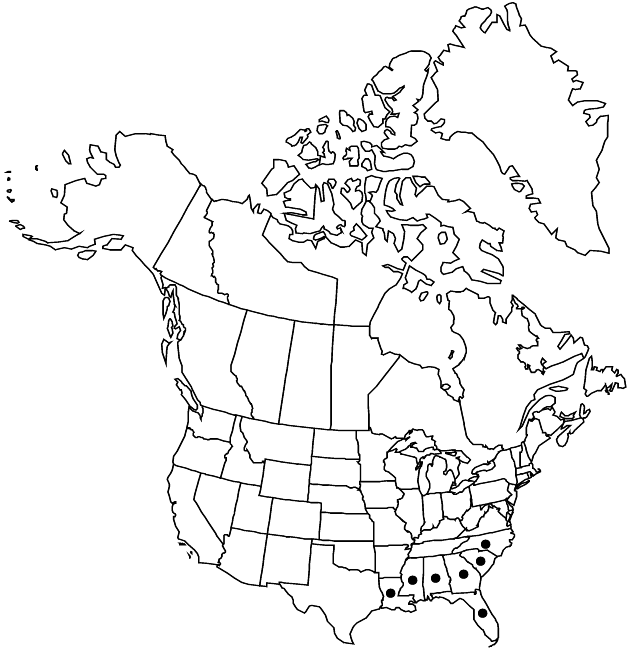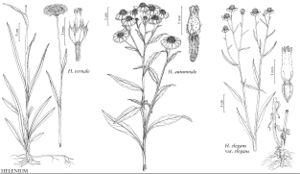Helenium vernale
Fl. Carol., 210. 1788.
Perennials, 30–80 cm. Stems usually 1, usually unbranched distally, weakly winged, glabrous proximally, glabrous or sparsely hairy distally. Leaves usually glabrous, rarely sparsely hairy; basal blades obovate to narrowly oblanceolate, usually entire or undulate to undulate-serrate; proximal and mid blades usually narrowly lanceolate to narrowly oblanceolate, usually entire, sometimes toothed; distal blades lance-linear, entire. Heads 1(–3) per plant, usually borne singly. Peduncles 2–23 cm, usually glabrous, sometimes sparsely hairy. Involucres hemispheric, 10–17 × 15–27 mm. Phyllaries glabrous or sparsely hairy. Ray florets 13–30, neuter; corollas yellow, 15–21 × 5–10 mm. Disc florets 150–650(–800+); corollas yellow proximally, yellow to yellow-brown distally, 4.6–6 mm, lobes 5. Cypselae 1–1.5 mm, glabrous; pappi of usually 8 entire or lacerate, non-aristate scales 1.5–2 mm. 2n = 34.
Phenology: Flowering Mar–May.
Habitat: Ditches, other moist areas such as wet woods, bogs, and swamp edges
Elevation: 10–50 m
Distribution

Ala., Fla., Ga., La., Miss., N.C., S.C.
Discussion
The name Helenium nuttallii A. Gray is illegitimate; it has been applied to plants treated here as H. vernale.
Selected References
None.
